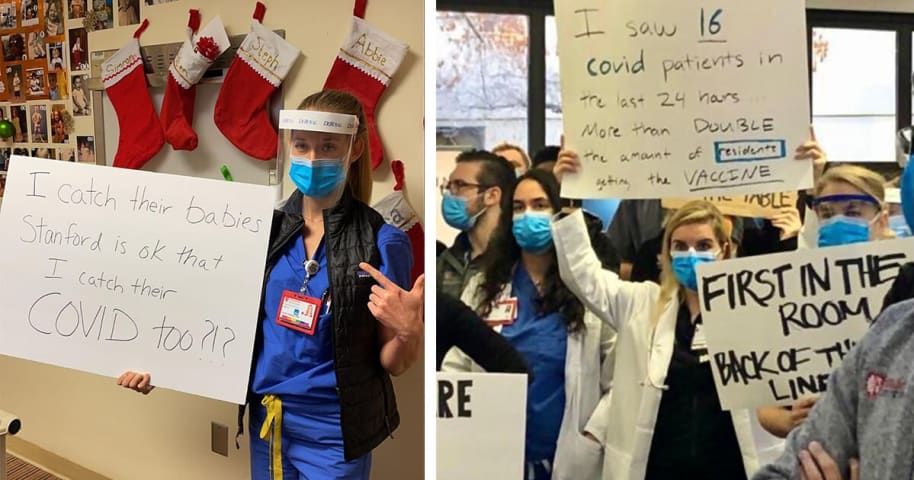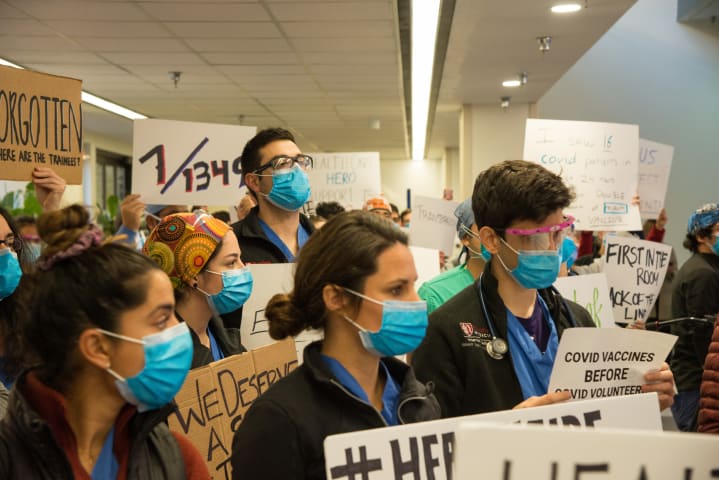Entities
View all entitiesCSETv0 Taxonomy Classifications
Taxonomy DetailsProblem Nature
Specification
Physical System
Software only
Level of Autonomy
Low
Nature of End User
Expert
Public Sector Deployment
No
Data Inputs
names, age, location, position, job, COVID-19 tests
CSETv1 Taxonomy Classifications
Taxonomy DetailsIncident Number
91
Risk Subdomain
1.1. Unfair discrimination and misrepresentation
Risk Domain
- Discrimination and Toxicity
Entity
AI
Timing
Post-deployment
Intent
Unintentional
Incident Reports
Reports Timeline

Update, Dec. 18, 2020: This story has been updated to add comments from Stanford Medicine.
Stanford Medicine residents who work in close contact with COVID-19 patients were left out of the first wave of staff members for the new Pfizer vacc…

Stanford Health Care apologized Friday for a plan that left nearly all of its young front-line doctors out of the first round of coronavirus vaccinations. The Palo Alto, Calif., medical center promised an immediate fix that would move the p…

Medical residents and nurses from Stanford Medical Center held a protest on Friday following the hospital choosing to vaccinate some staff members who don’t interact with coronavirus patients over other frontline workers.
Video footage from…

An algorithm determining which Stanford Medicine employees would receive its 5,000 initial doses of the COVID-19 vaccine included just seven medical residents / fellows on the list, according to a December 17th letter sent from Stanford Med…

When resident physicians at Stanford Medical Center—many of whom work on the front lines of the covid-19 pandemic—found out that only seven out of over 1,300 of them had been prioritized for the first 5,000 doses of the covid vaccine, they …
Variants
Similar Incidents
Did our AI mess up? Flag the unrelated incidents
Similar Incidents
Did our AI mess up? Flag the unrelated incidents







